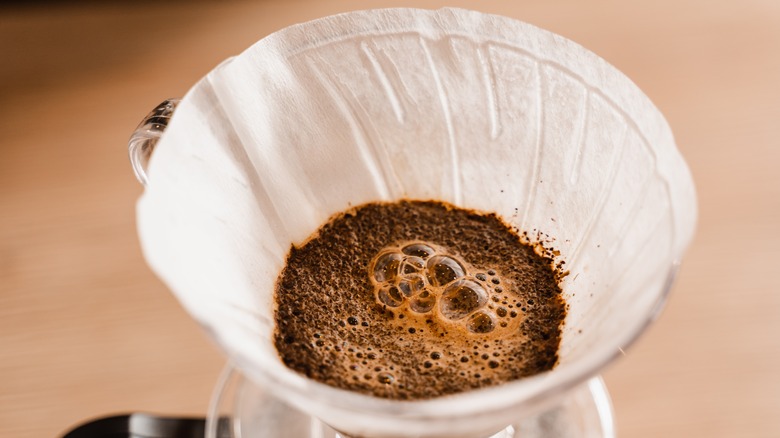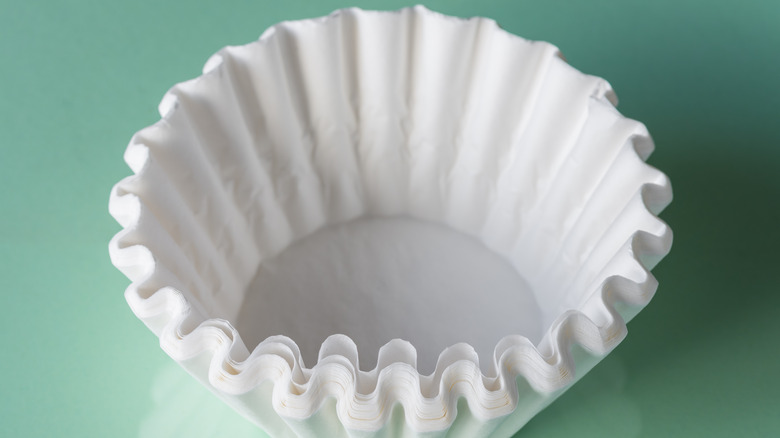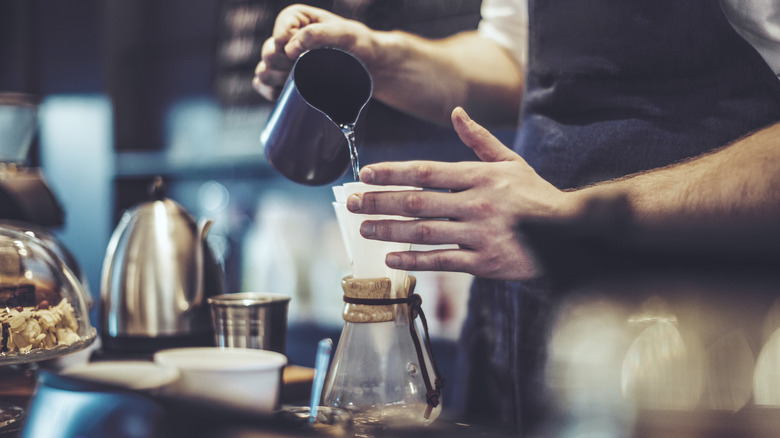Why You Should Always Wet Your Coffee Filters
Maybe your morning coffee is a quick routine to get you some caffeine as fast as possible, or maybe it's a calmer morning ritual because you like the taste and want to get it just right. In either case, assuming you care at least a little about your coffee's flavor — you've picked this over tea, after all — there are some little ways to make your brew taste a bit better. For example, taking a moment to pre-wet your coffee filter can improve your coffee's flavor and make the brewing process run more smoothly.
What does rinsing a paper filter do for your coffee? A few things, but perhaps most importantly, it can prevent the filter's papery flavor from mixing into the coffee. Paper filters often carry a bit of dust on them, even if they're sealed, and this can add some unpleasant dirty flavors into the coffee. Unbleached filters (usually colored light brown) have more of those paper fibers and residue, but bleached filters (which are white) might have a mild chlorine aftertaste, according to some. Either way, you're likely to see your baristas pre-wetting filters at your local coffee shop.
A more even brew
The quickest way to rinse a paper filter is to simply place the filter where it normally goes in the coffee maker and pour hot water over it, to flush out all those extra flavors before you add the grounds. Hot water also helps by preheating the filter before the brewing process. Just make sure to dispose of that rinsing water.
Sometimes the change in taste can be minor, and some people can't taste the difference between coffee brewed with wet and dry coffee filters. However, it still helps with a brewing term known as agitation. When you agitate your coffee, you're preventing the water from unevenly wetting your grounds by stirring (or "agitating") the filter so the water's evenly distributed. Pre-wetting the filter helps the water distribute through the grounds more easily because everything is evenly saturated and water channels are less likely to form — this way, water channels won't form and overbrew some grounds while underbrewing others.
And, less scientifically, wetting your filter also helps it stay in place better during the brewing cycle. So there's a smaller chance of the filter collapsing and grounds making their way into the carafe.
Know your filters
On the note of bleached versus unbleached filters mentioned earlier, it's worth going a little more into detail about types of coffee filters. Bleached coffee filters are more common and often cheaper, being processed with chlorine or hydrogen peroxide to make them a pale white. While there's back and forth over how much of an aftertaste this leaves, it's less pronounced than the mild papery flavor of unbleached filters which people report tasting more often. On the other hand, unbleached filters are often better for the environment because they have less chemicals, but rinsing them can be more important if you notice that dusty taste.
If you're using a reusable cloth filter, which can make coffee taste sweeter by filtering out extra oils, then you know that they're rinsed after a brewing cycle to clear out the grounds. But it's still helpful to rinse them with hot or boiling water every now and then to clean out any oil buildup, although it doesn't need to be done with every brewing cycle.
In any case, remember that any washing should happen before the grounds touch the filter — you don't want to wash coffee grounds down the drain in any situation.


